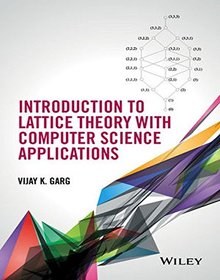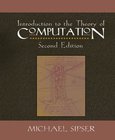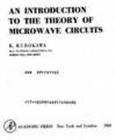Introduction to Lattice Theory with Computer Science Applications

Book Details:
| Publisher: | Wiley-Blackwell |
| Series: | Wiley |
| Author: | Vijay K. Garg |
| Edition: | 1 |
| ISBN-10: | 1118914376 |
| ISBN-13: | 9781118914373 |
| Pages: | 272 |
| Published: | May 18 2015 |
| Posted: | Apr 23 2017 |
| Language: | English |
| Book format: | |
| Book size: | 5.37 MB |
Book Description:
A computational perspective on partial order and lattice theory, focusing on algorithms and their applications This book provides a uniform treatment of the theory and applications of lattice theory. The applications covered include tracking dependency in distributed systems, combinatorics, detecting global predicates in distributed systems, set families, and integer partitions. The book presents algorithmic proofs of theorems whenever possible. These proofs are written in the calculational style advocated by Dijkstra, with arguments explicitly spelled out step by step. The author s intent is for readers to learn not only the proofs, but the heuristics that guide said proofs. Introduction to Lattice Theory with Computer Science Applications: Examines; posets, Dilworth s theorem, merging algorithms, lattices, lattice completion, morphisms, modular and distributive lattices, slicing, interval orders, tractable posets, lattice enumeration algorithms, and dimension theory Provides end of chapter exercises to help readers retain newfound knowledge on each subject Includes supplementary material at www.ece.utexas.edu/garg Introduction to Lattice Theory with Computer Science Applications is written for students of computer science, as well as practicing mathematicians.
Download Link:
Related Books:
Introduction to Queueing Systems with Telecommunication Applications
The book is composed of two main parts: mathematical background and queueing systems with applications. The mathematical background is a self containing introduction to the stochastic processes of the later studies queueing systems. It starts with a quick introduction to probability theory and stochastic processes and continues with chapters on Markov chains and regenerative processes. More recent advances of queueing systems are based on phase type distributions, Markov arrival processes and quasy birth death processes, which are introduced in the last chapter of the first part.The second part is devoted to queueing models and their applications. After the introduction of the basic Markovian (from M/M/1 to M/M/1//N) and non-Markovian (M/G/1, G/M/1) ...
Introduction to the Theory of Computation
2nd Edition
This highly anticipated revision builds upon the strengths of the previous edition. Sipser's candid, crystal-clear style allows students at every level to understand and enjoy this field. His innovative "proof idea" sections explain profound concepts in plain English. The new edition incorporates many improvements students and professors have suggested over the years, and offers updated, classroom-tested problem sets at the end of each chapter....
Introduction to the Theory of Microwave Circuits
In Chapter 1, some of the topics in the conventional circuit theory are reviewed, which have particular importance in the theory of microwave circuits. There include the theory of transmission line, bilinear transformations, and power waves. Chapter 2 gives a review of vector analysis and the fundamental properties of electromagnetic fields to facilitate our later study. In Chapter 3, waveguides are discussed for the first time. Here, the eigenvalue problem is studies in detail including the completeness of eigenfunctions. Without the discussion of the completeness, the theory is only partially correct since no answer is given to certain fundamental questions such as why an exponential variation with distance is assumed for each mode and no other pos...
2007 - 2021 © eBooks-IT.org



